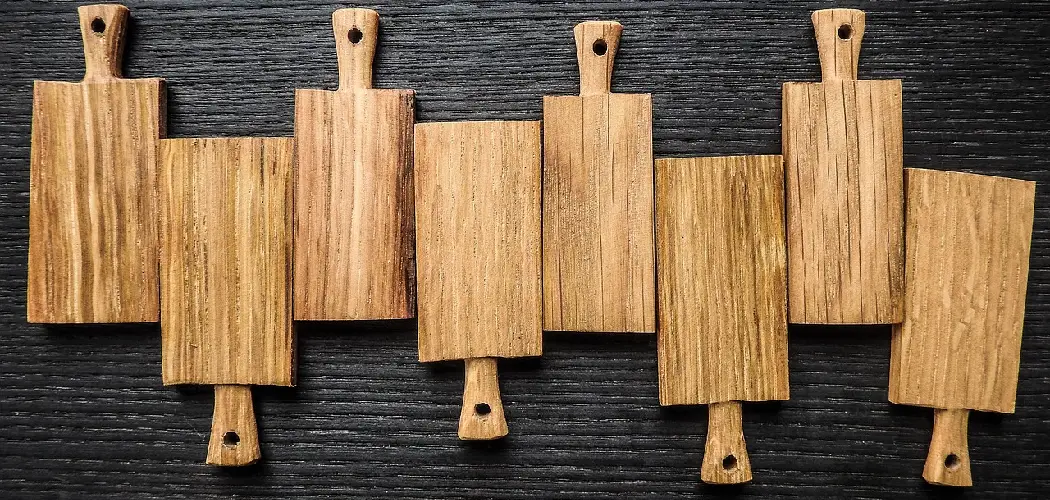Are you ready to take your kitchen game to the next level? There is nothing that can make a home chef feel more accomplished than cutting with precision on a sleek and well-maintained cutting board.
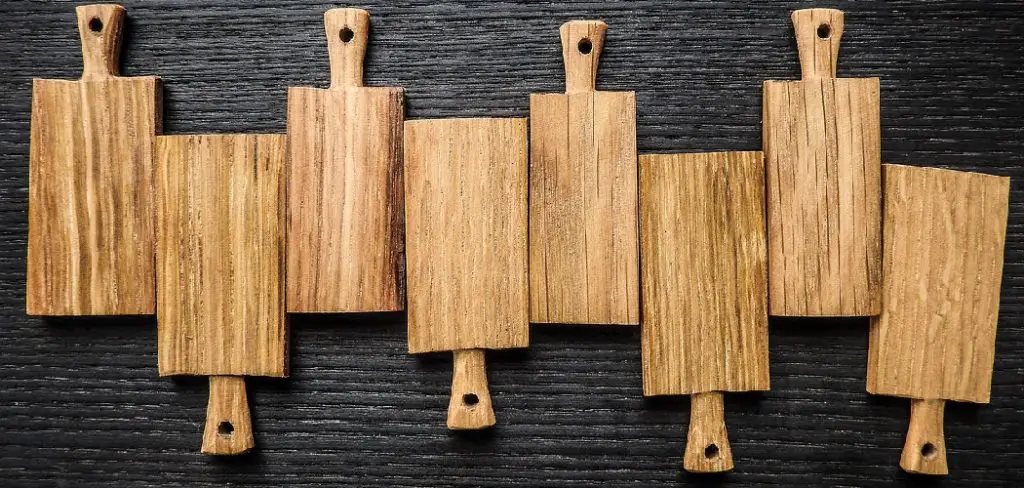
Apart from providing a convenient surface for food preparation, cleaning and storing your cutting boards properly can help ensure their longevity as well as help prevent bacteria buildup. So let’s get started – here are some tips for how to store cutting boards correctly
What is a Cutting Board?
A cutting board is a flat surface made from a hard material such as wood, plastic, glass or metal. It can be used for food preparation and to protect your countertops from scratches and bacteria. It is important to learn how to properly store and care for your cutting board in order to keep it clean and safe for use.
Cleaning a Cutting Board:
It is important to regularly clean and sanitize your cutting boards both before and after each use. Use a combination of hot water, soap, vinegar, and baking soda or lemon juice to get rid of any bacteria on the surface. Make sure to rinse and dry the board after each use.
Safety Measures:
When storing your cutting board, make sure that it is away from heat or direct sunlight. This will help prevent the warping and cracking of the board. It is also important to store your cutting board in a dry place as moisture can cause bacteria to grow. It is also a good idea to place a paper towel underneath the cutting board when storing it – this will absorb any excess moisture and prevent it from warping.
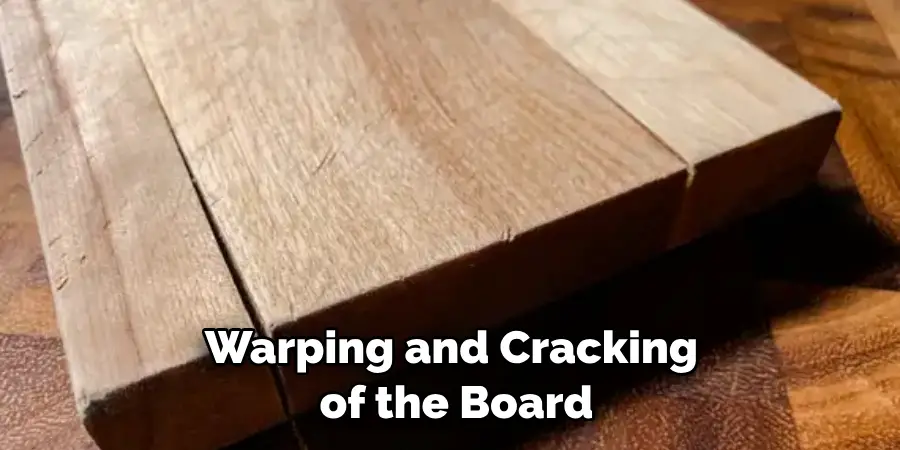
10 Step-by-step Easy Guidelines on How to Store Cutting Boards
Step 1: Prepare Your Cutting Board for Storage
Clean the surface with hot water, soap and vinegar or baking soda/lemon juice to get rid of any bacteria. It is also important to make sure the board is completely dry before storing it. But don’t use any harsh chemicals or abrasive cleaners as they can damage the surface.
You can also use mineral oil to keep the board from drying out. It is also important to remove any food particles from the board. It is best to use a stiff brush or scrubber for this. If your board is made of wood, make sure to use a soft cloth or sponge.
Step 2: Invest in a Cutting Board Stand
Investing in a cutting board stand can help keep your boards neat and organized. The stand allows you to store multiple cutting boards at one time and prevents them from sliding away or getting lost in the pantry. But if you don’t have a cutting board stand, you can store the boards somewhere out of sight. This could be in a cupboard, drawer or even on a shelf. You can also place them on a wall-mounted rack if you prefer.
Step 3: Use Shelf Separators
If you don’t have the space for a cutting board stand, shelf separators can be used as an alternative. Place the separators in between each cutting board for easy access and organization.
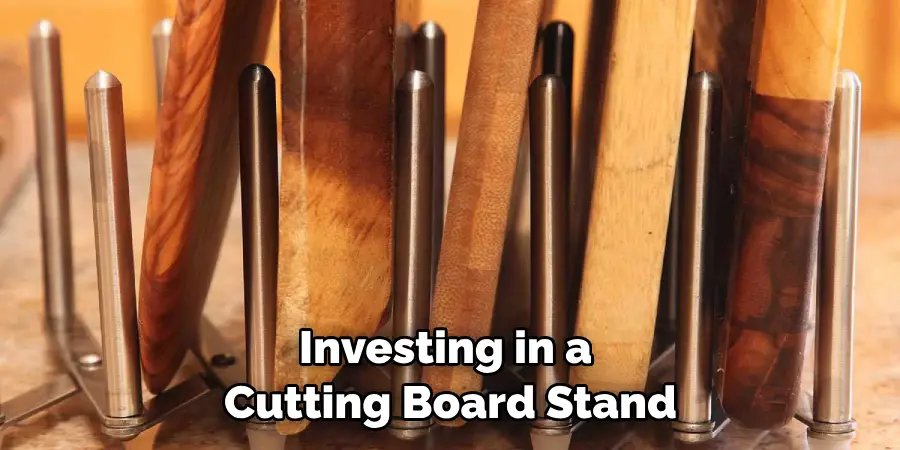
It is important to note that the separators should be placed so that they don’t interfere with air circulation. Although this is not an essential step, it will help keep your cutting boards from sticking together. If you have multiple boards, it is a good idea to label each one for easy identification.
Step 4: Utilize Hanging Hooks
The next best option for storage is using hanging hooks on the wall or the inside of a cabinet door. This allows you to store your cutting boards off the counter and out of the way. This is especially useful if you don’t have much counter space and need to maximize every inch of your kitchen.
This is also a great option if you want to hang multiple boards in an organized fashion. But make sure the hooks are securely attached to the wall or cabinet door, as the cutting board can be quite heavy.
Step 5: Keep Them in a Drawer
If you don’t have enough wall or cupboard space, keeping your cutting boards in drawers is another great option. Make sure that there is some room between each board so that they don’t get scratched up or damaged while being stored away.
It is also important to make sure the drawer is kept clean so that your cutting boards don’t get contaminated. So make sure to dust it off every once in a while. Otherwise, keeping them in a drawer is an efficient way to store your cutting boards. But remember to always keep the drawer shut when not in use.
Step 6: Place Them on Top Racks
You can also store your cutting boards on top racks of cabinets or pantries for easy access. This keeps them out of sight but still within arm’s reach when needed. It is a great option for those who don’t have enough counter space or simply want to declutter their kitchen.
You can also use this option to store multiple boards at once. But make sure to measure the top rack of your cabinets or pantries before purchasing multiple cutting boards. However, if you have a smaller kitchen or limited space, this might not be the best option for you.
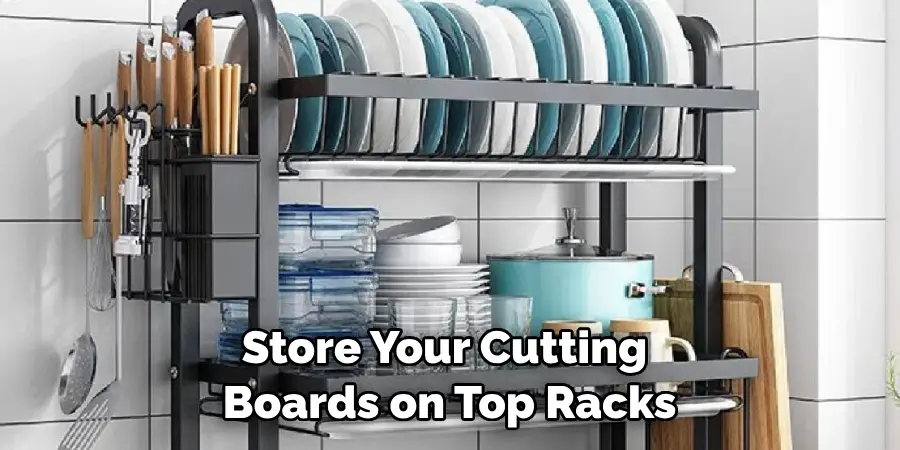
Step 7: Invest in Cutting Board Containers
These containers are specifically designed for storing and protecting cutting boards. They keep them in pristine condition while also keeping out dust and moisture that can cause damage. If you don’t have enough space to store your cutting boards in drawers or on top racks, these containers are a great solution.
It is important to note that the containers should be large enough to fit all of your cutting boards without them getting damaged. But if you only have one or two, then investing in these containers might not be necessary. It all depends on the size of your kitchen and how many boards you have.
Step 8: Make Use of Old Kitchen Towels
If you don’t have a container or stand, using old kitchen towels is another great way to store your cutting boards. Simply wrap each board in a towel and place it in the bottom of a cupboard or drawer for easy access the next time you need it.
If you have multiple boards, it is important to separate them with a cloth or piece of cardboard in order to prevent them from getting scratched up. This is also a great way to protect your cutting boards from moisture and dust.
Step 9: Place Them Underneath Appliances
Appliances such as microwaves, toasters and ovens often come with an open space underneath them. This can be used to store large cutting boards when not in use. Just make sure that they are completely dry before putting them away.
It is also important to note that storing cutting boards in high temperatures, such as above an oven or stovetop, can cause the board to warp over time. But if you don’t have any other option, this can be a great way to store your boards without taking up too much space. You can also use a cutting board caddy to keep the boards organized and protected.
Step 10: Keep Them Separated with Paper
Using parchment paper or wax paper is a great way to keep your cutting boards from sticking to each other while also keeping them in pristine condition. Always make sure that the boards are completely dry before wrapping.
This can help keep the boards clean and organized while also protecting them against dust, moisture and bacteria. It also makes them easier to find the next time you need to use them. It is also a great way to store multiple boards without taking up too much space.
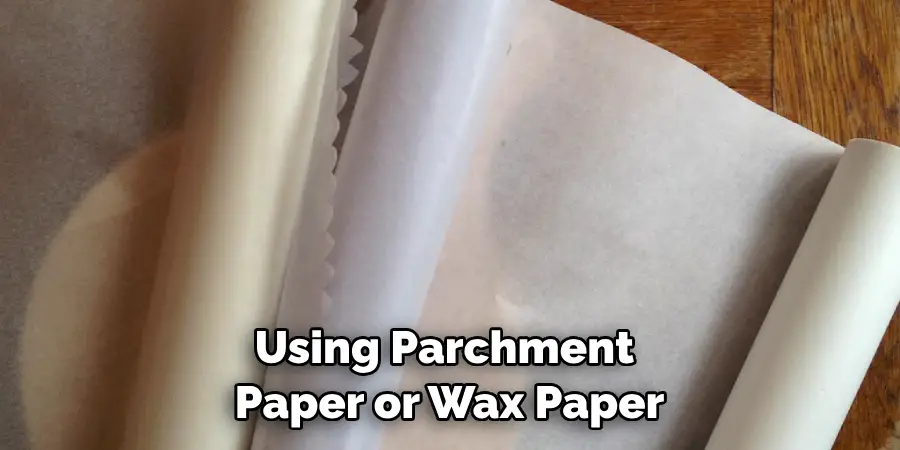
By following these simple steps on how to store cutting boards, you can ensure that your cutting boards will stay clean and safe for many years to come. Proper storage is key when it comes to maintaining good kitchen hygiene and preserving the life of your boards. And remember – always wash and sanitize your cutting boards after each use.
Frequently Asked Questions
Q: How Often Should You Clean Your Cutting Boards?
A: You should clean and sanitize your cutting boards after each use to prevent the buildup of bacteria.
Q: Are Wooden Cutting Boards Better Than Plastic Ones?
A: It really depends on what you prefer. Wooden cutting boards are more aesthetically pleasing and durable but plastic is easier to clean and can be sanitized at higher temperatures.
Q: Should I Store My Cutting Boards in the Refrigerator?
A: No, it is not recommended to store your cutting boards in the refrigerator as this can cause them to warp over time. The best place to store them is in a cool, dry area away from direct sunlight or moisture.
Q: What is the Best Way to Store Cutting Boards?
A: The best way to store cutting boards is in a stand, container or drawer. This will keep them neat and organized as well as protected from dirt, dust and moisture.
Conclusion
By applying the steps in this article, you now have all the information you need to store your cutting boards easily and safely. Learning how to store cutting boards well not only makes your kitchen look tidier but also ensures that items like these will last for several years before having to be replaced. Keeping easy care instructions in mind allows for more successful storage as well as upkeep of your prized possessions.
Now, if you are looking for a way to better organize your deep bathroom drawers, check out our next article on how to organize those so that you can make even better use of the space available!

